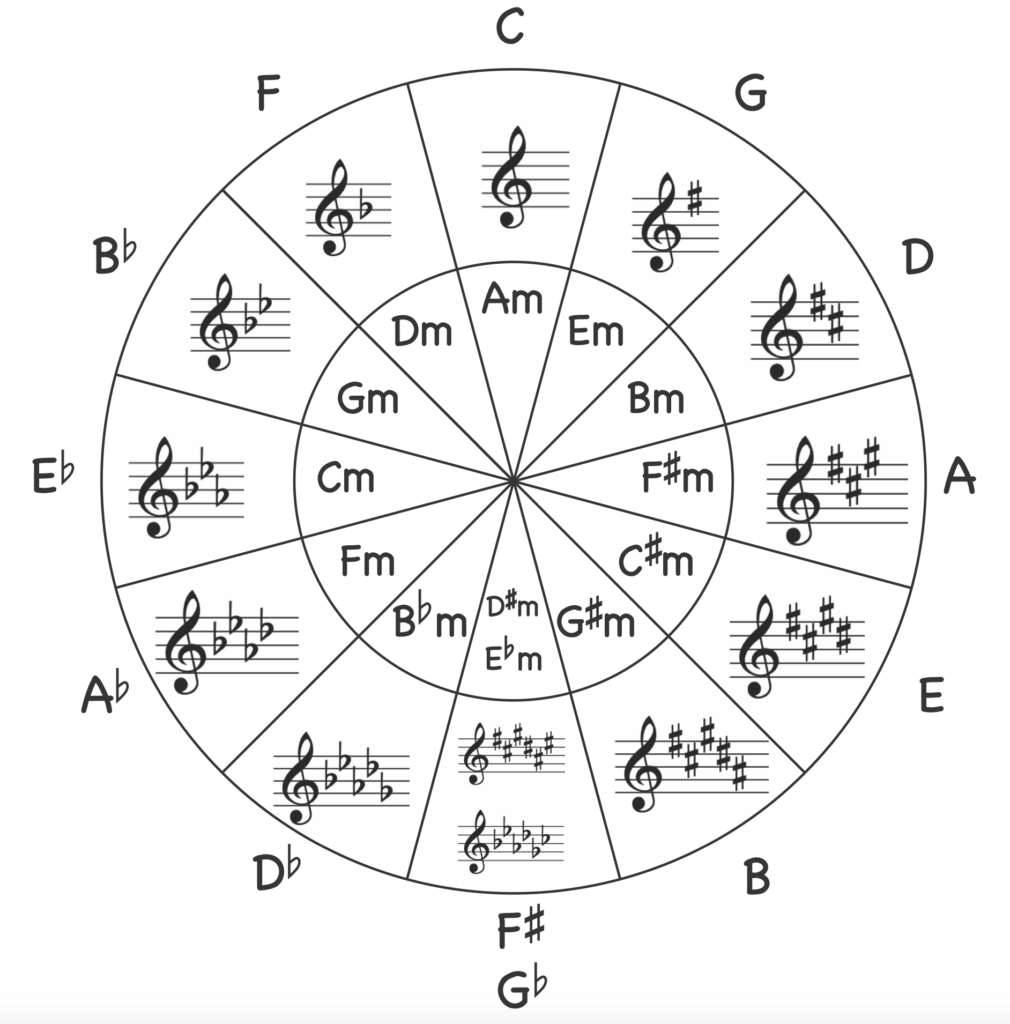
We’ve all heard of it, perhaps your teachers have mentioned it a few times. But what is the point of the circle of fifths?
The circle of fifths actually has many benefits. Usually the circle of fifths is drawn as a circle – no prizes for guessing why! However, it is actually just a pattern of notes which can be drawn in many different ways. For now we will stick with a circle! This is the most common way, and in my opinion the clearest!
Why is this called the circle of fifths?
The name comes from the fact that as you move around the circle you move up by a fifth each time. A perfect fifth to be exact! What we mean by a fifth is that there are five notes between each key name.
See below for an example!

[thrive_leads id=’12645′]
How does the circle of fifths work?
- The circle of fifths works by having the major scales around the outside of the circle. The minor scales are then shown inside. Remember, each major scale has a relative minor scale that shares the same key signature.
- At the very top of the circle we always have the key ‘C major’. Why? This is simply because C major has no sharps or flats. As we go around the circle, the number of sharps in each scale goes up by one. For example, the scale after C major is G major and this has one sharp etc.
- You can continue going around the circle using this perfect fifth interval. However, when you get to the bottom of the circle of fifths you should now think in the enharmonic equivalent. This is important as if we continue along in sharps, we will end up with too many to deal with!
- Gb major, much like F# major, also has a key signature of six, but these are six flats! If you continue going from Gb major, you will find that you end up at Db major where you can reduce the number of flats by one (there are five flats in Db major!).
- Make sure that you familiarise yourself with these patterns. You should also ensure that you are used to thinking in perfect fifth intervals. Once you improve your confidence, it will become clear that the circle of fifths is actually very easy to remember! One side of the circle utilizes sharps and the other flats. Remember, no scale has both sharps and flats!
How is this helpful to me and my playing?
The circle of fifths is an incredibly useful diagram that can help students memorise all 24 major and minor scales. It is very logical and easy to understand and will support your development as a musician. This visual resource helps you to see the relationship between the major and its relative minor. This is incredibly useful when learning your scales but also great for the theoretical knowledge surrounding this. You can use it to help you understand the pieces you play in greater detail. It will also support you when you compose your own!
Let me know if this has helped you understand what the point of the circle of fifths is!
Check out my Circle of Fifths resources here!
[thrive_leads id=’14034′]
